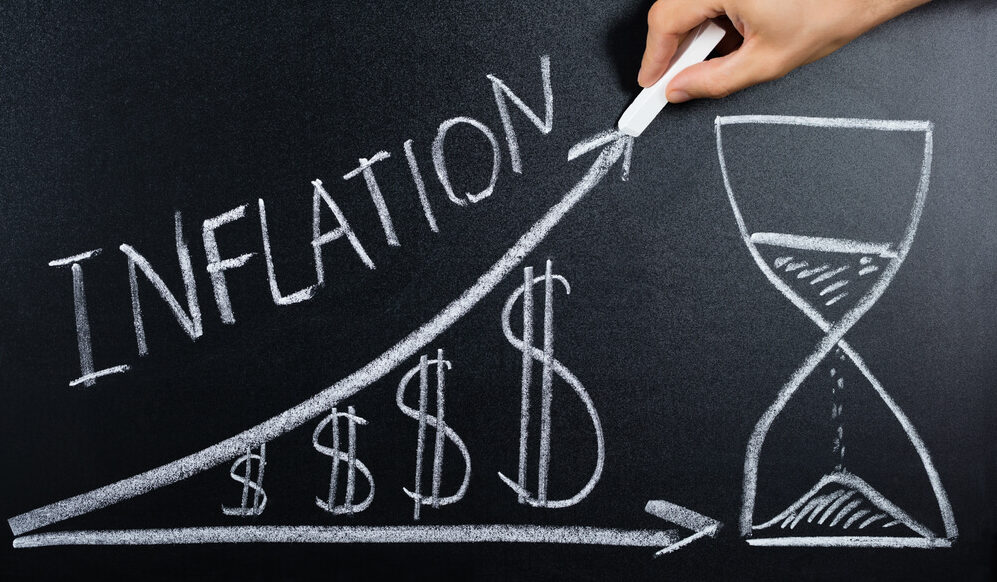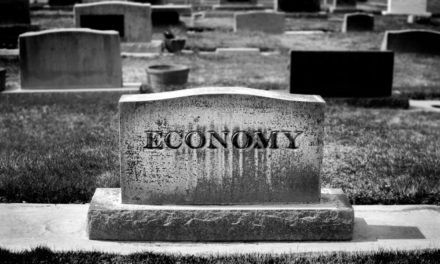Week 10 of the Quarantine
SAN MARTIN, ARGENTINA — Time is speeding up. Things we expected to take decades are happening in just days, months, weeks…
And here in Northwest Argentina, we get a sneak preview of the fast-approaching future…
What do we see, exactly?
The end of the American Empire, for one. And the end of the fake dollar that supports it.
King of the Planet
To make a long story short, when v goes up, $ goes down.
“I remember the late 1980s,” said our administrator in Salta last night. “I was a student in Buenos Aires. My parents had to send me money every day so I could eat. Every day, I’d rush to the supermarket. And there, they always had a lot of people who spent all day long changing the prices, trying to keep up with the inflation.”
But while the Argentine currency was collapsing… the U.S. dollar was king of the planet.
Launched in 1971, the present dollar system is already nearly half a century old. But a pure-paper system — with no rigid ties to gold — never lasts more than an entire credit cycle.
The fake money is fine as long as it acts like real money. And that’s easy, when interest rates are going down and prices appear stable. It’s especially easy when it is the world’s reserve currency. People are happy to take it in payment for goods and services.
They are happy, too, to leave it in bank accounts or under mattresses.
And then, when there is a crisis… they want more of it. They become reluctant to part with it… holding fast to their dollars as if to life itself. Prices go down; the currency goes up.
Easy Way Out
But economies breathe in and breathe out. They make mistakes… and correct them. People become greedy… and then fearful. They are challenged by unexpected shocks… and they react.
Under pressure of “necessity” — war, depression, civil unrest — the authorities always take the easy way out. That is, they “print” money in the hope that the crisis will pass and the economy will “grow its way” into the extra money supply.
For most of the 20th century, the Federal Reserve added to the money supply at a reasonable rate — between 2% and 3% per year. This was generally in line with economic growth, so prices remained more or less stable (with notable exceptions in education, housing and medical care).
But then, there was the crisis following 9/11… and the fall of the Nasdaq… and another crisis following the mortgage-lending collapse in 2008-2009.
Each time, the Fed reacted by “printing” more money. And each time, it avoided the pain of a real correction, kept bad managers in their jobs, turned bad companies into “zombies” dependent on below-market credit, and made bad investments profitable by juicing up prices with more fake dollars.
Cometh the coronavirus… and what else could it do? Print more money!
And this time — the third crisis response this century — its money-printing is more reckless than ever. America’s monetary footing (the Fed’s balance sheet) stood at $3.8 trillion back in September 2019. And it had taken almost 106 years – from when the Federal Reserve was founded in 1913 — to get there. But over the following 12 months, it will add twice that amount.
Argentines Know Better
Americans — with only faint memories of mild inflation in the 1970s — expect things to go back to “normal” soon. But Argentines know better. They know that when people catch on to the scam of money-printing, they will rush to get rid of their dollars. The velocity of money, v, — the rate at which money changes hands — will soar… along with prices.
Combining the experience of the pampas with the business attitudes of North America is a group of Americans doing business in Argentina. They began sharing their ideas and information more than 100 years ago. Since then, “they’ve seen it all.”
Your editor has the good fortune to be included in their email exchanges.
Comes one member with this notice… The Argentine government just introduced a 5,000 peso note:
La Nación reports that the new paper issue already has a design, and is in current production, with a targeted issue date of mid- to late-June. One of the initial designs pictures Dr. Ramón Carrillo (Perón’s first Minister of Health) and Cecilia Grierson (held out to be Argentina’s first female doctor). At today’s current Blue market, the new bill would be worth about US$35.
Here, another draws on painful experience to predict what will happen next. “We are on our way!” he writes:
Almost 40 years ago, in 1981, the Argentine Central Bank issued a 1,000,000 peso note, which was worth about 90 U.S. dollars. The peso currency was known as Peso Ley 18.188, which lasted from 1970 to 1983. In 1983, the Peso Ley was replaced by the Peso Argentino, and four zeros were dropped. All this took place before the hyperinflation of 1989 and 1991. Imagine what will happen in the next couple of years.
Yes, we are on our way. Since we’ve been in the country — only three months — the peso has lost 30% of its value against the U.S. dollar on the black market.
Writing on the Wall
But the dollar is doomed, too. And for the same reason.
Another member recalls writer and philosopher Ayn Rand’s quote:
When you see that in order to produce, you need to obtain permission from men who produce nothing… when you see corruption being rewarded and honesty becoming a self-sacrifice, you may know that your society is doomed.
The U.S. feds print even more money than the Argentines. And they decide who gets it. Most Americans may be blind. But those who do business in Argentina can read the writing on the wall: Desastre!
So get ready… The $5,000 bill is coming to America, too. Perhaps it will have a picture of a masked eagle on one side… and the hero of the War Against COVID-19, Anthony Fauci, on the other.

Stay tuned…
Regards,
Bill
• This article was originally published by Bonner & Partners. You can learn more about Bill and Bill Bonner’s Diary right here.




